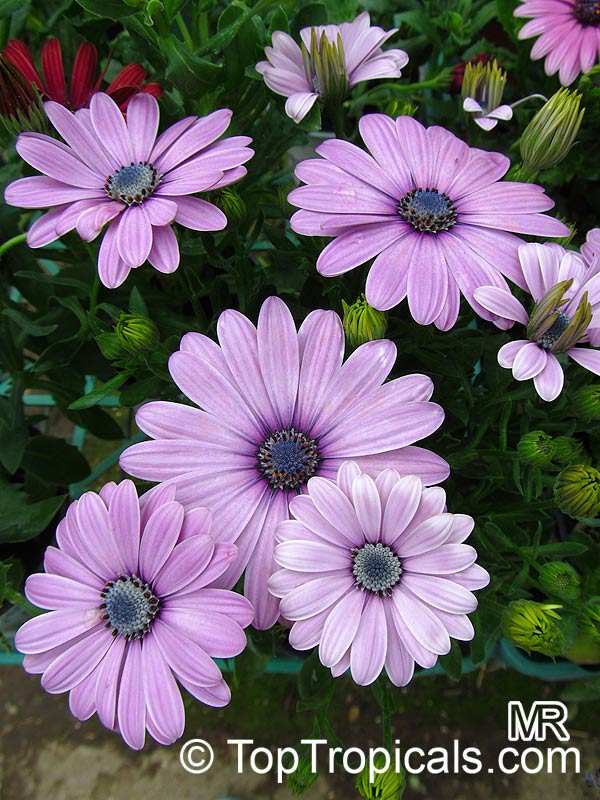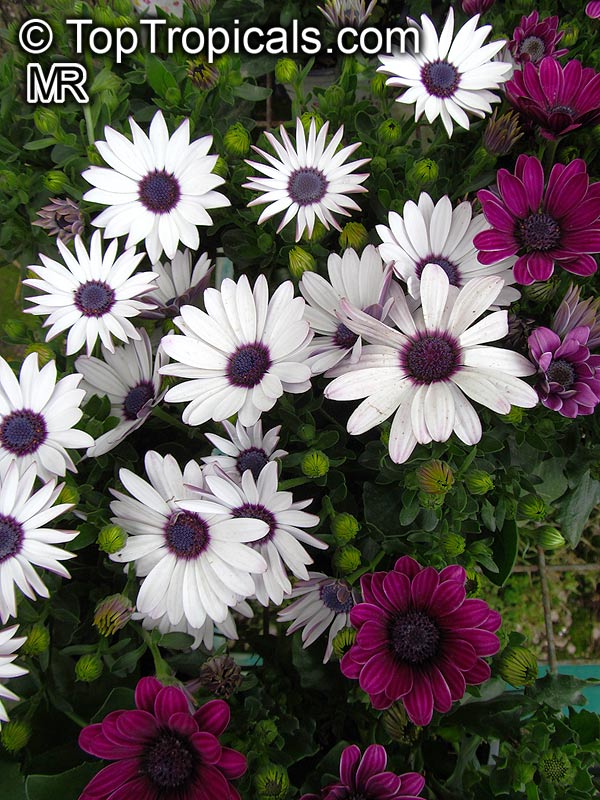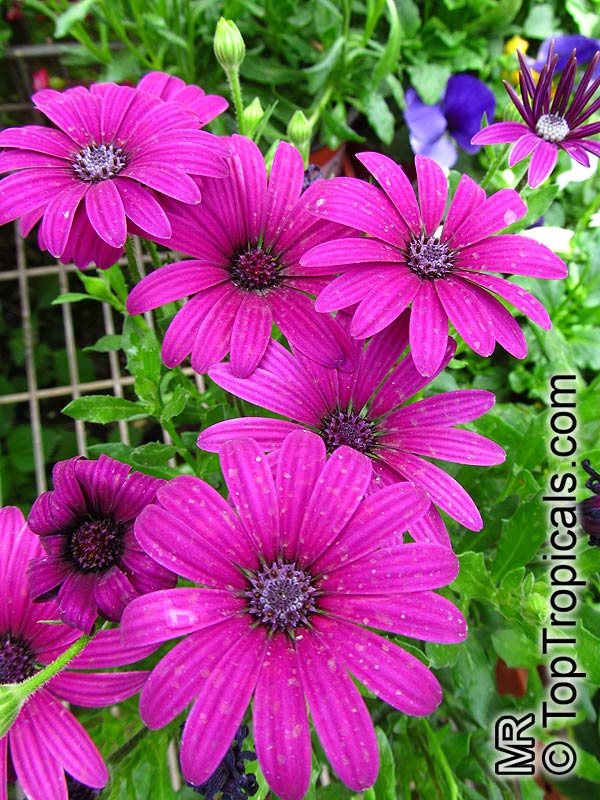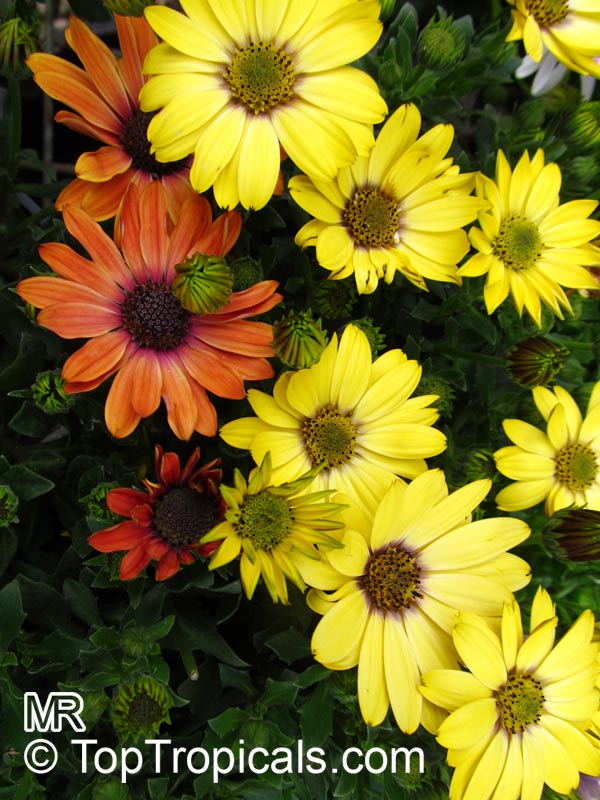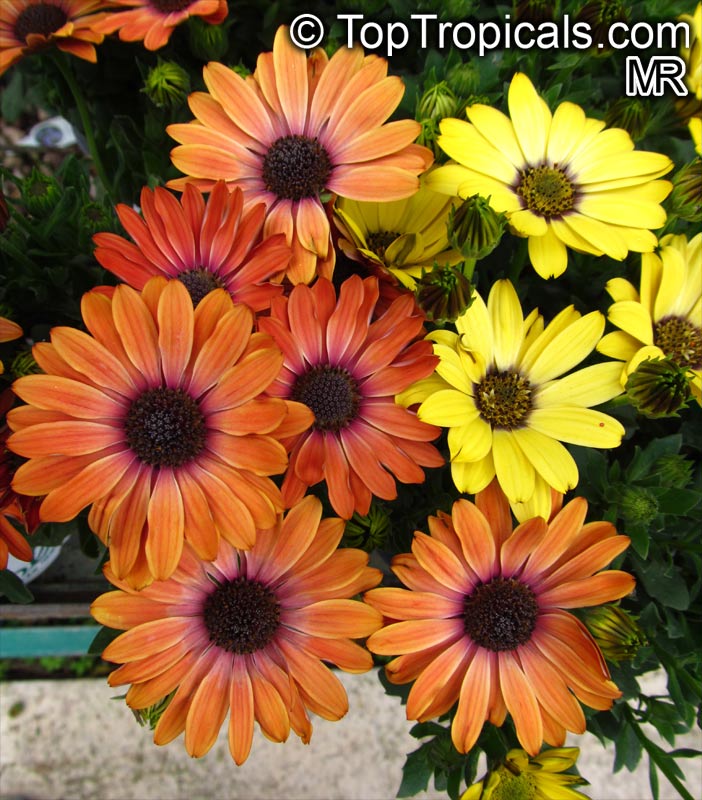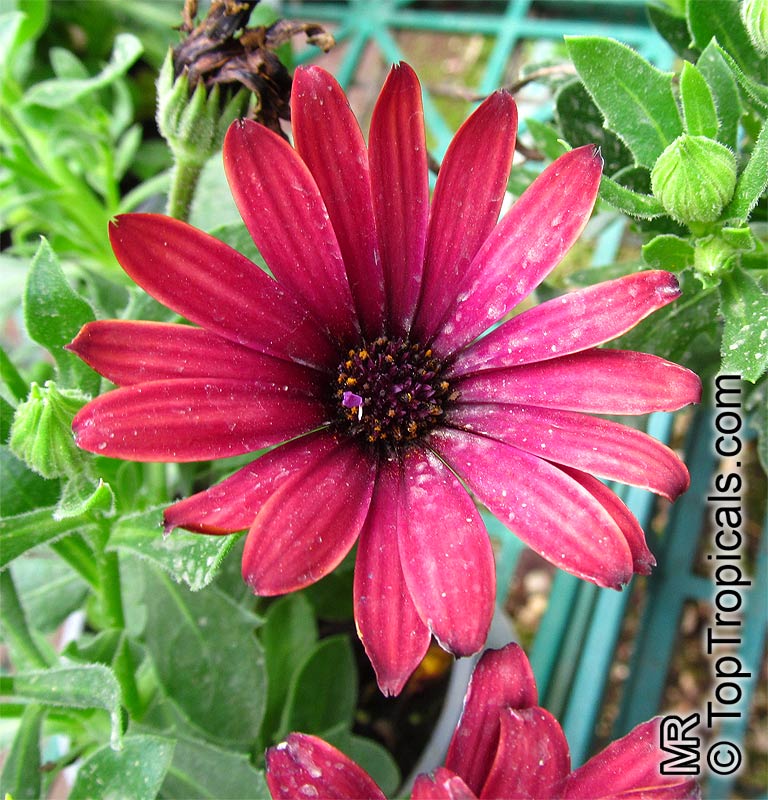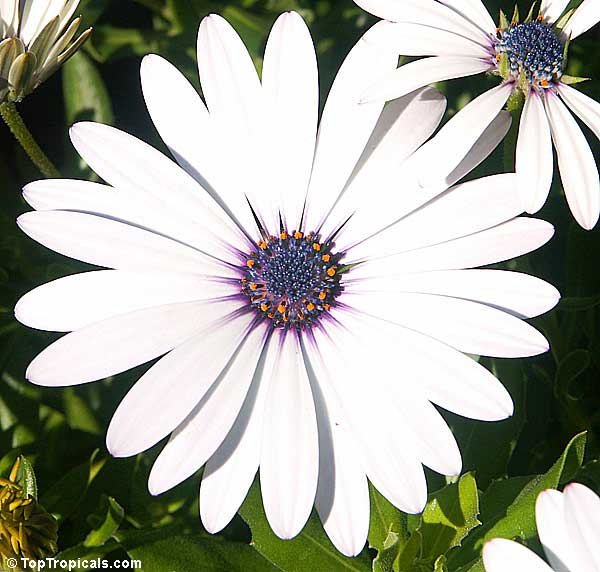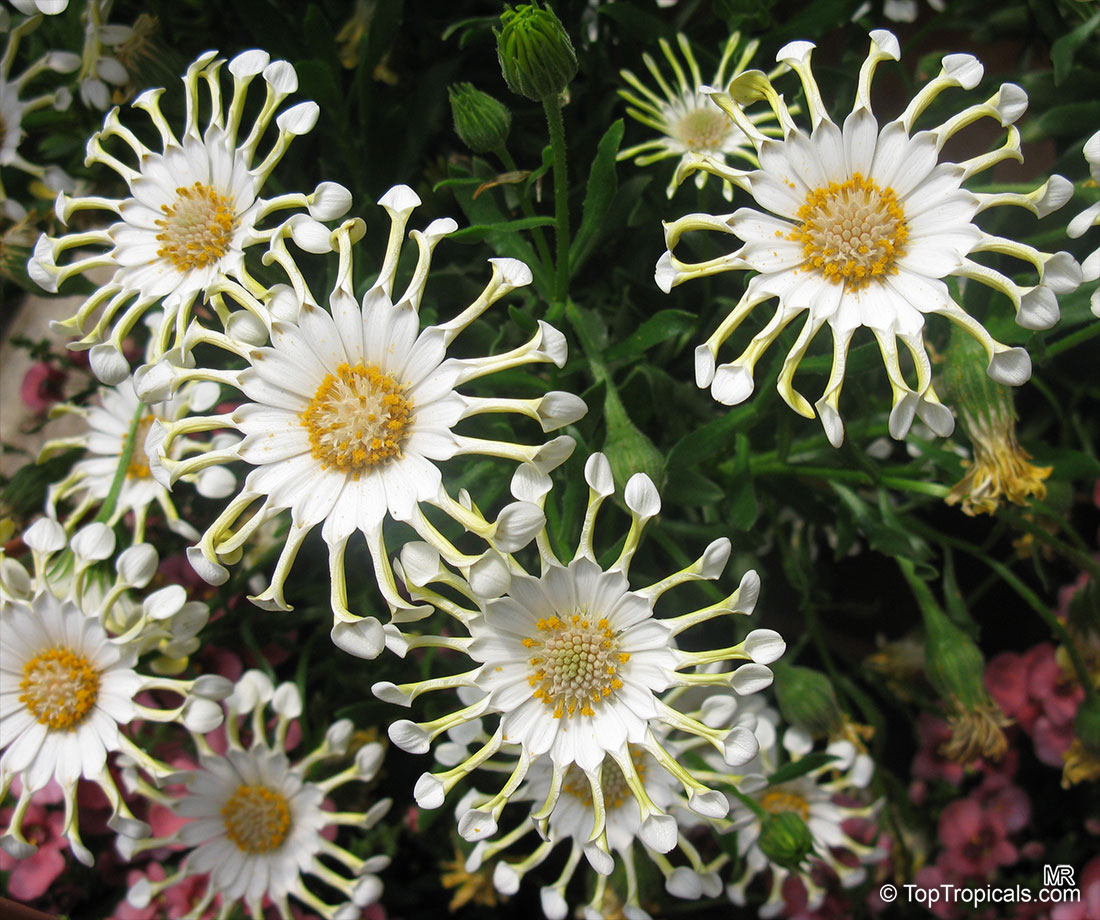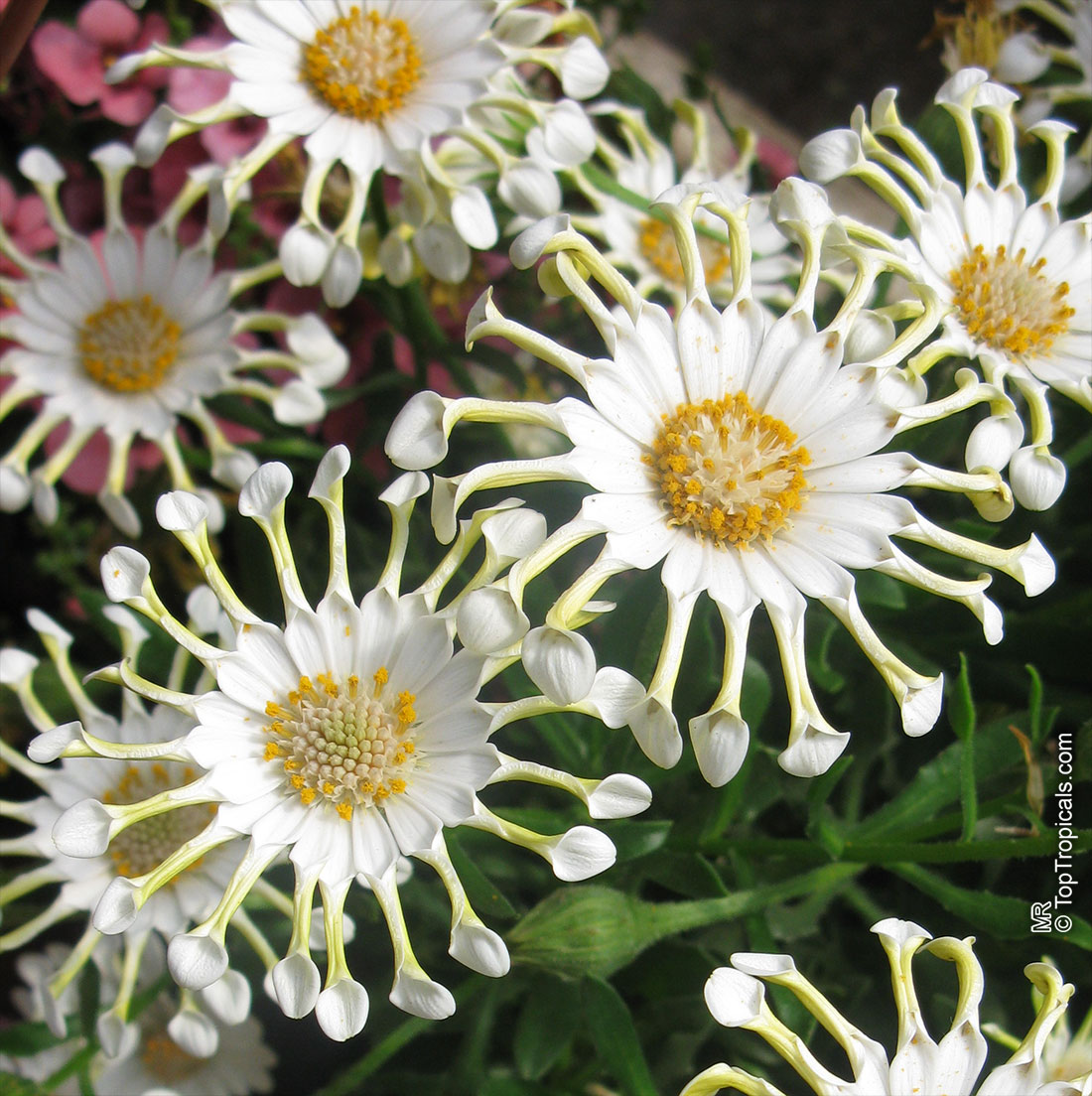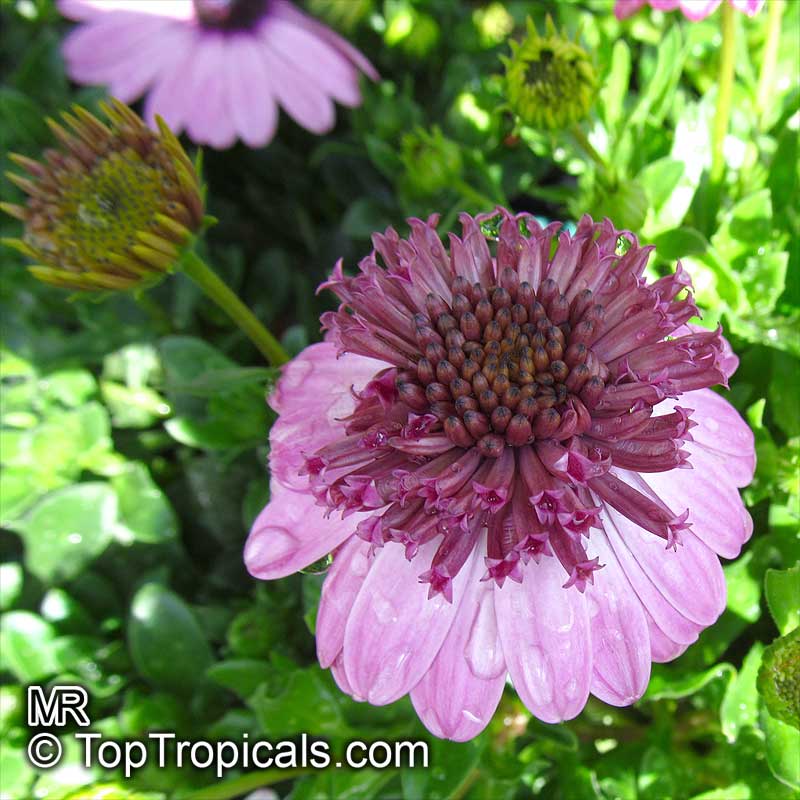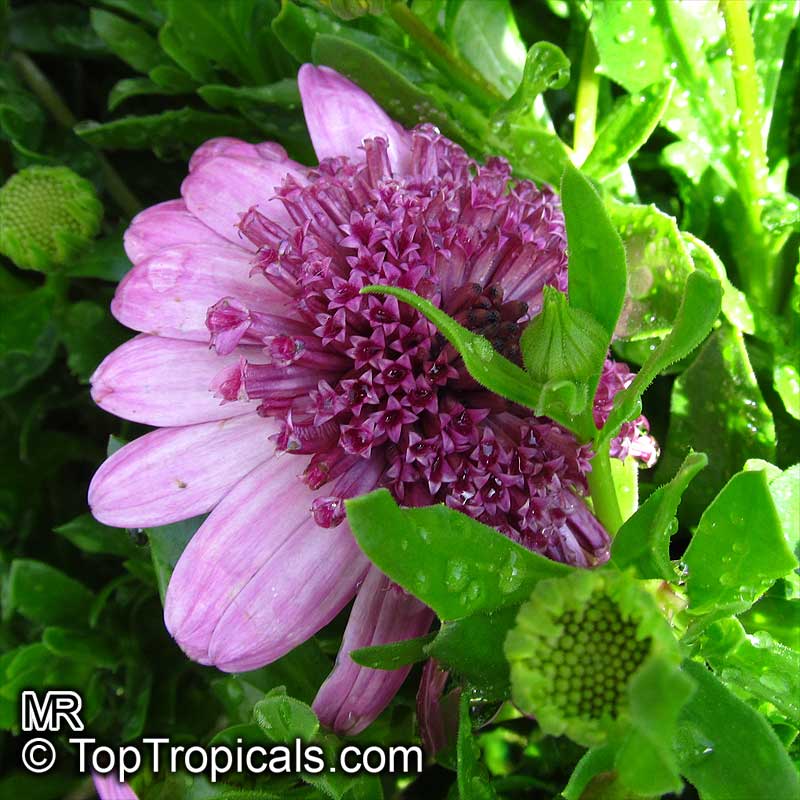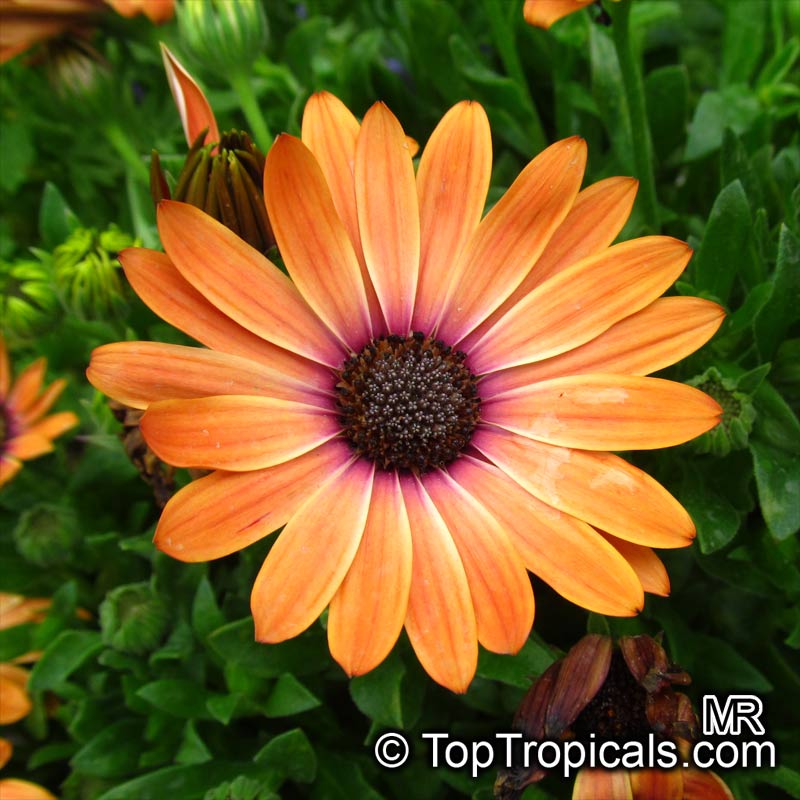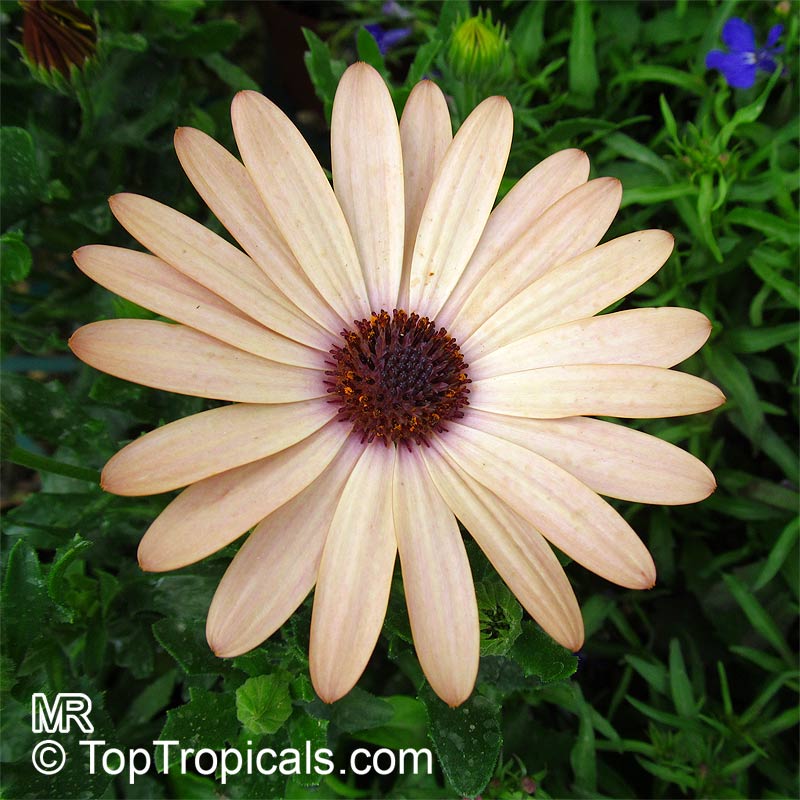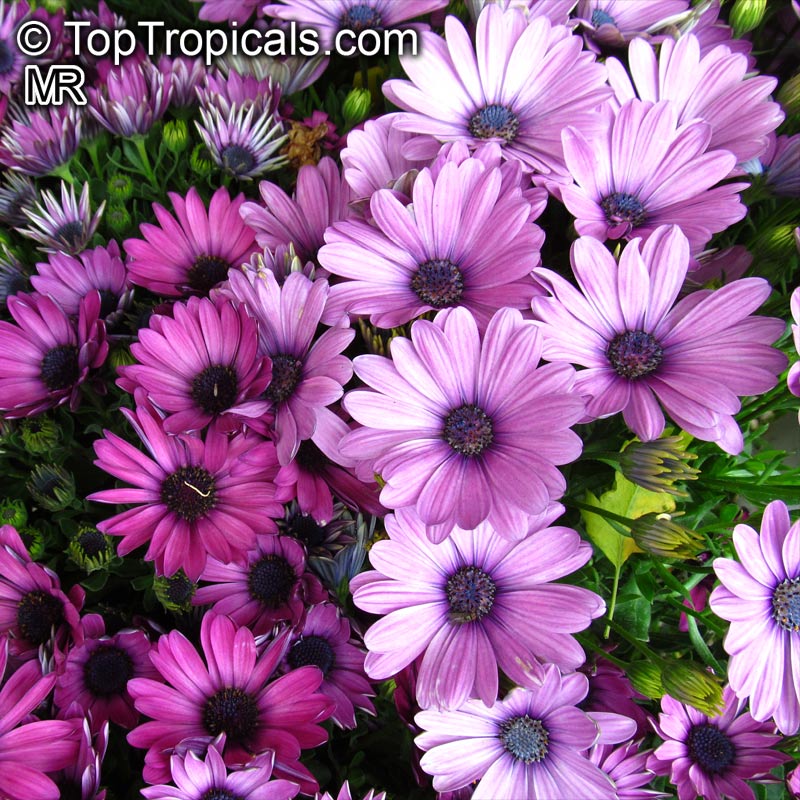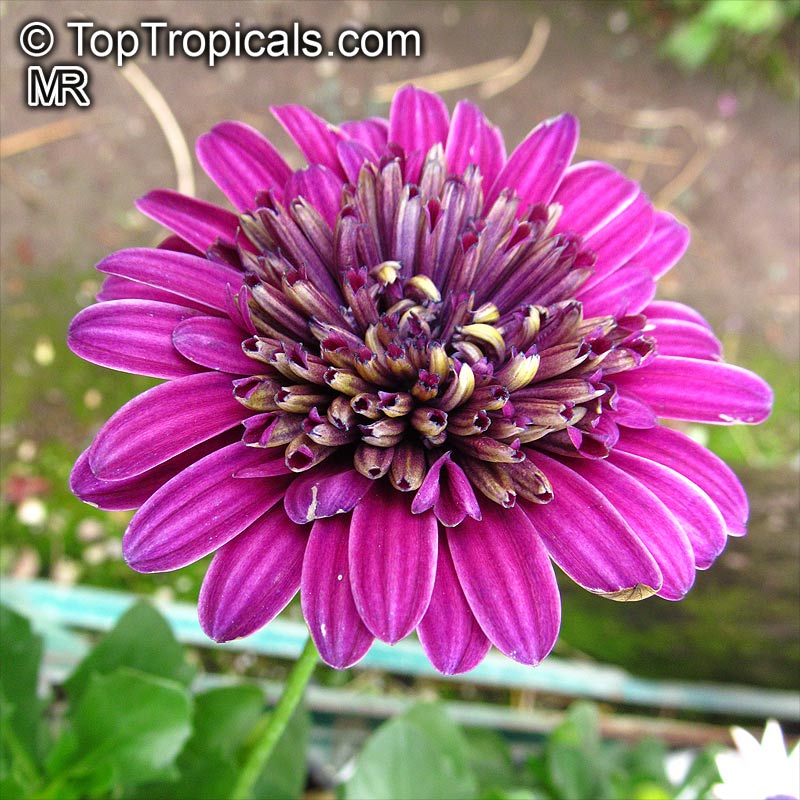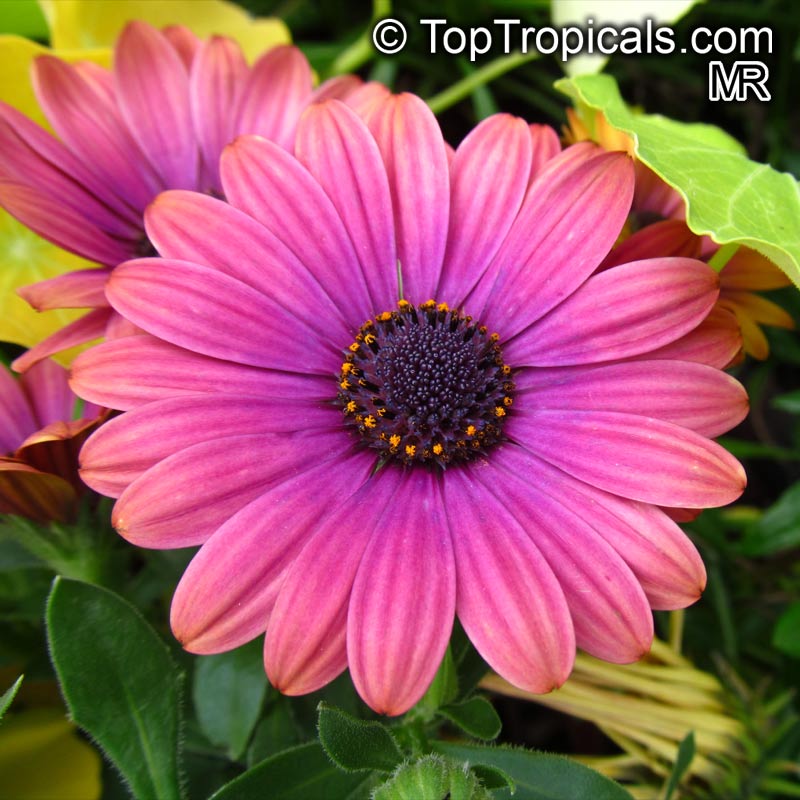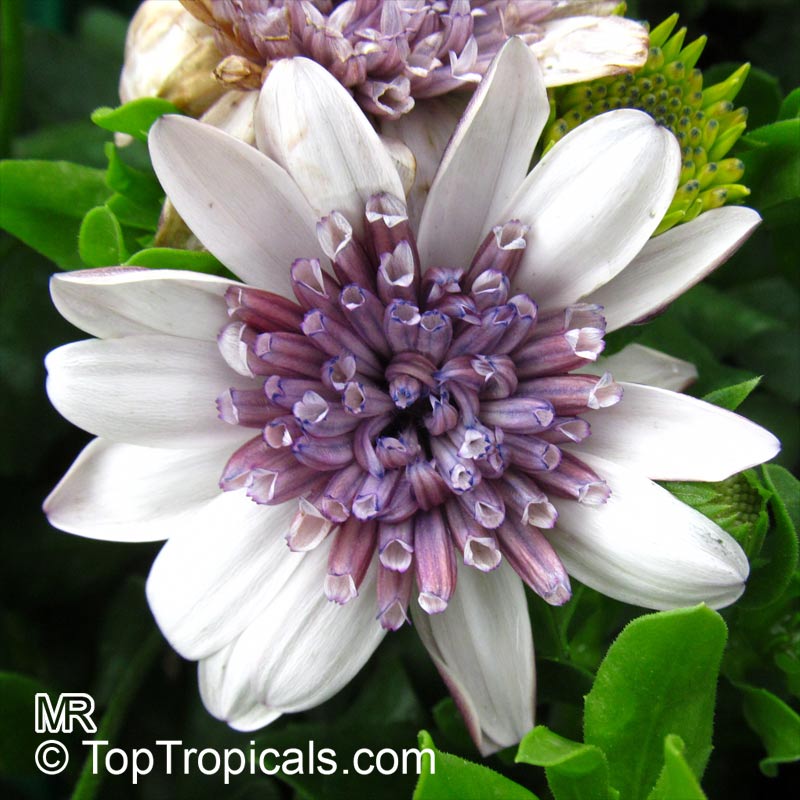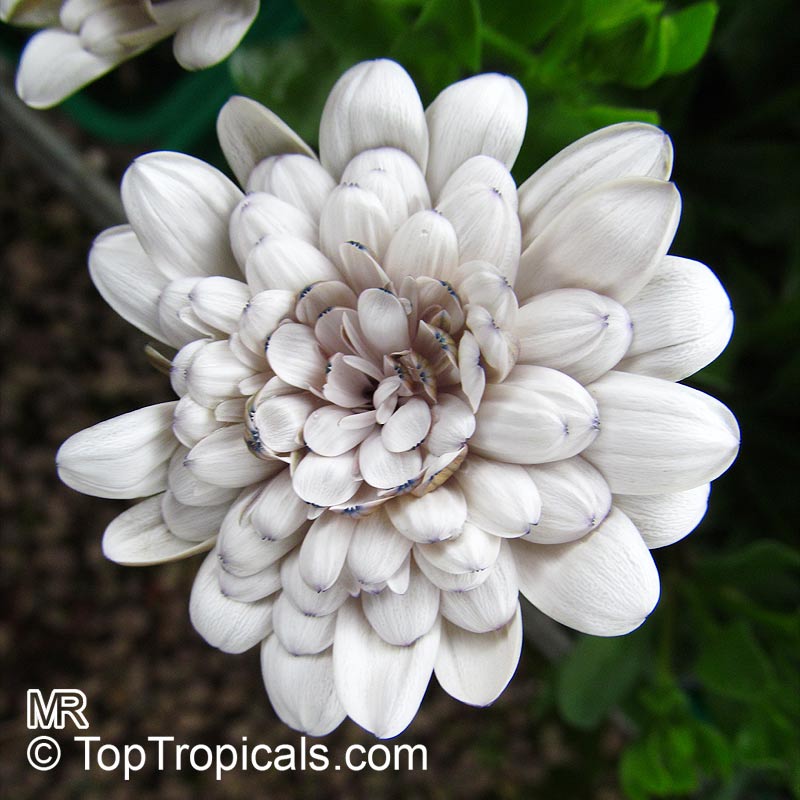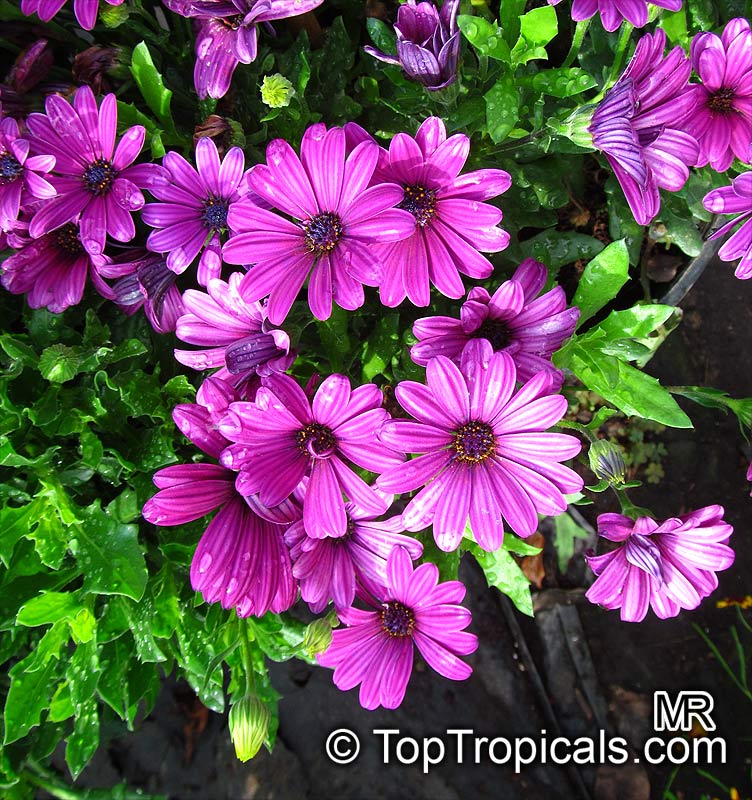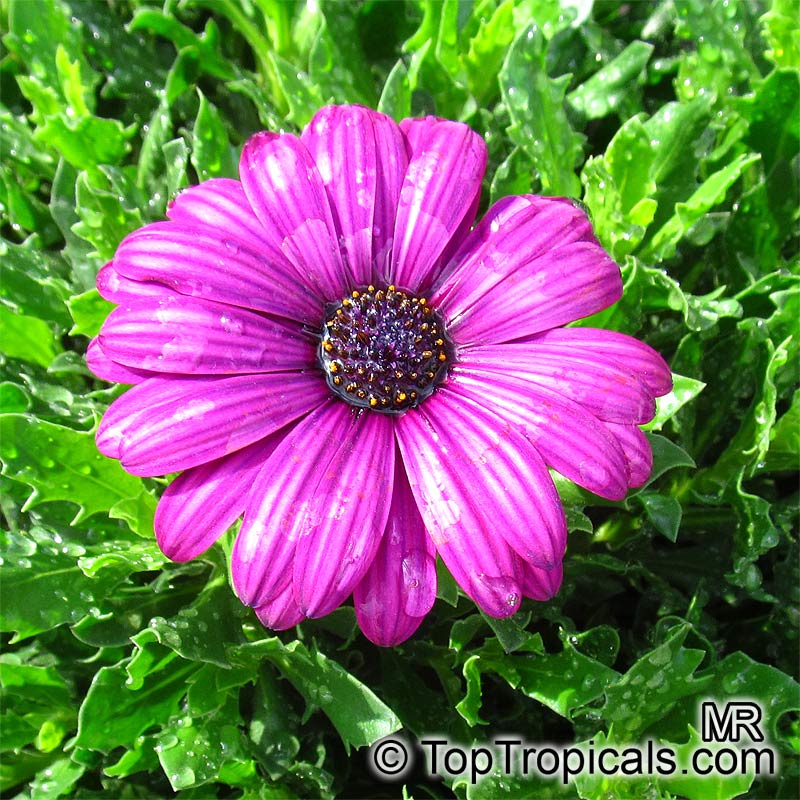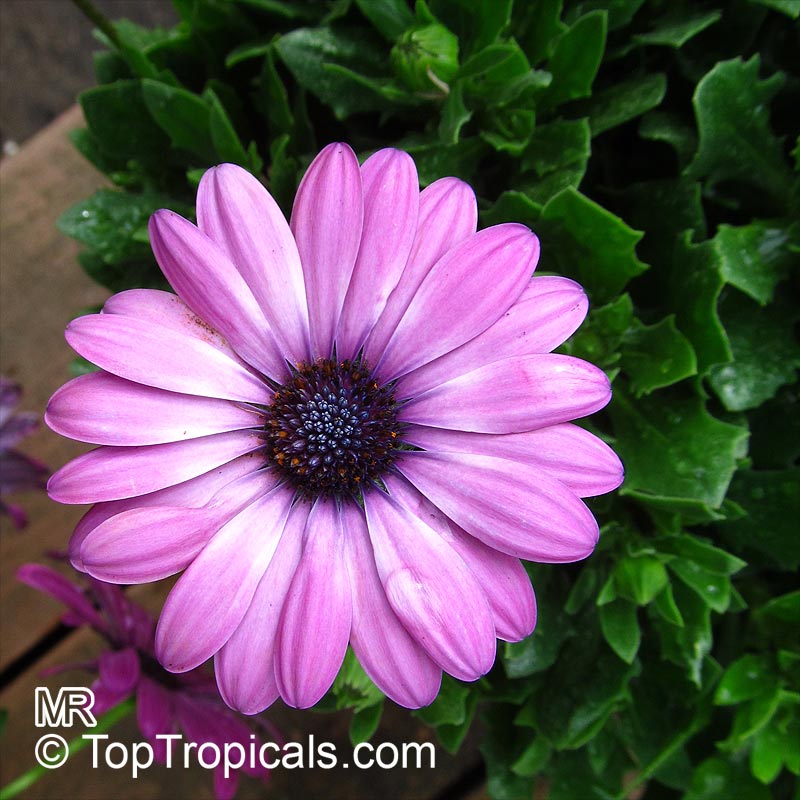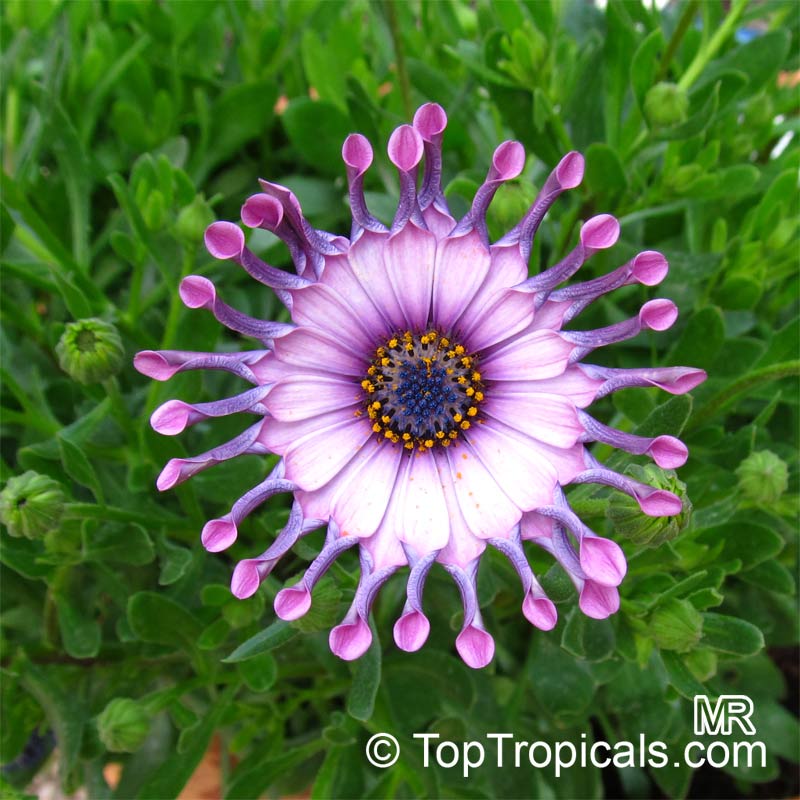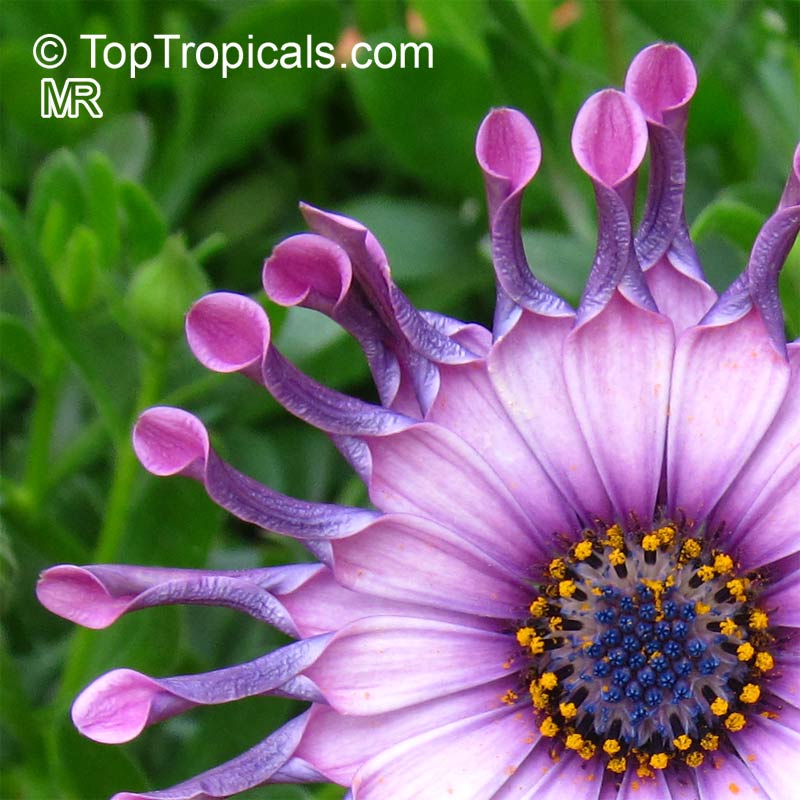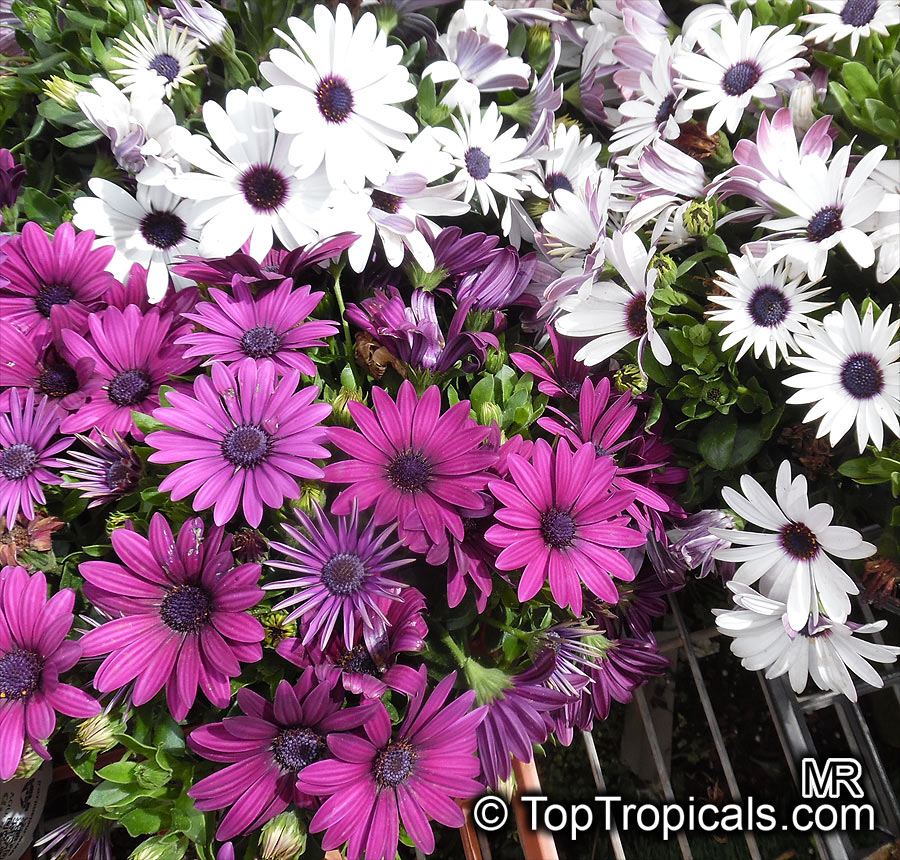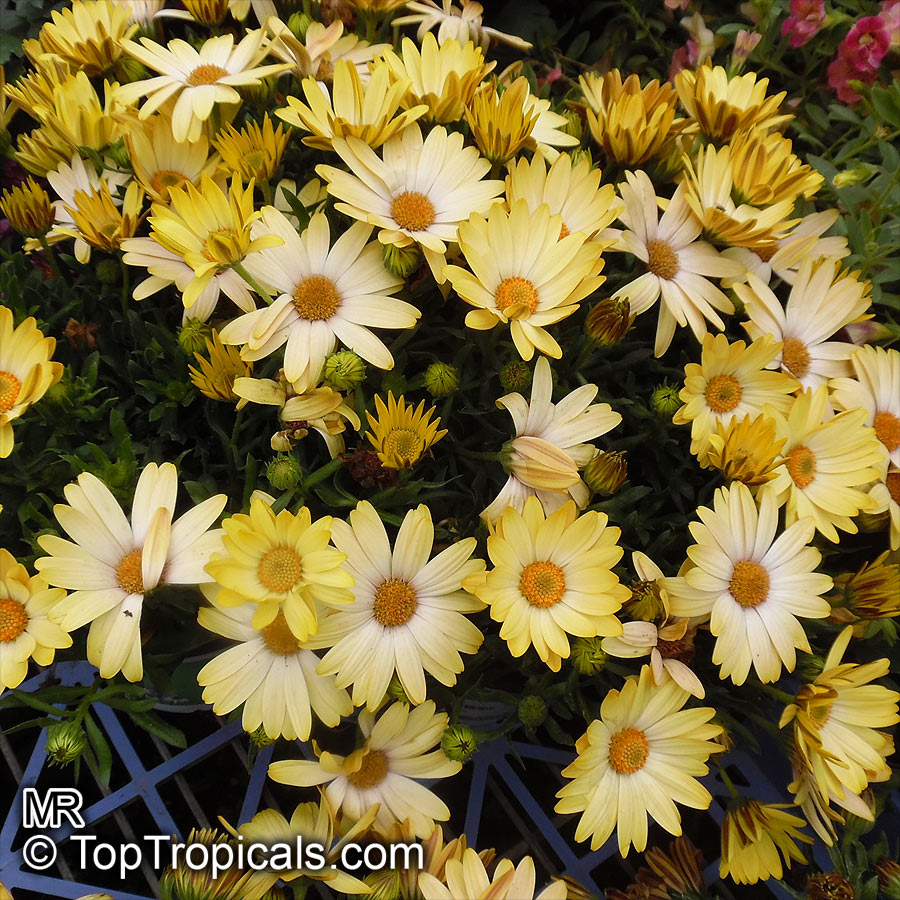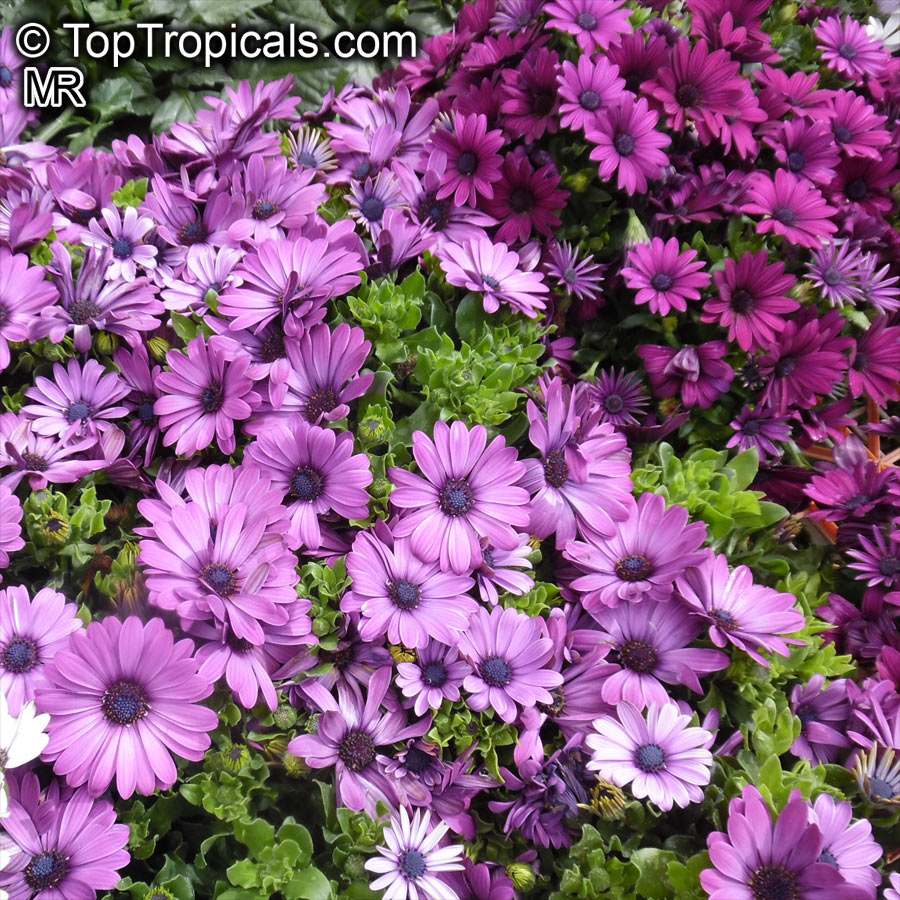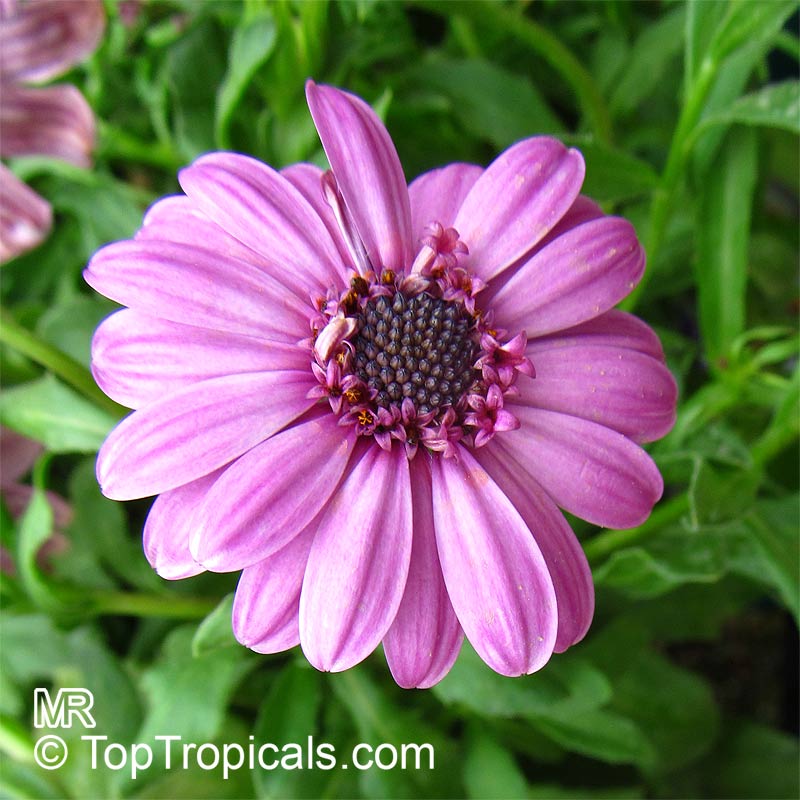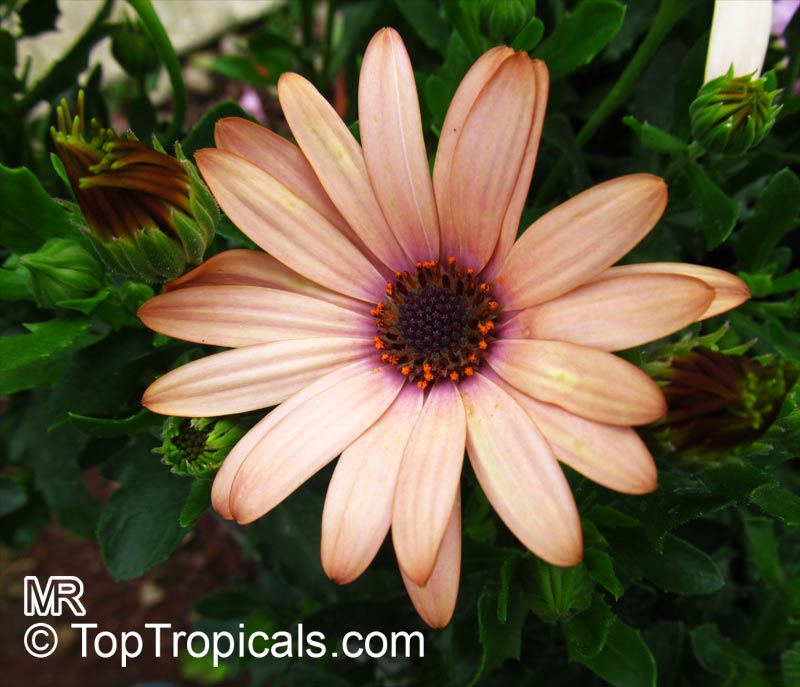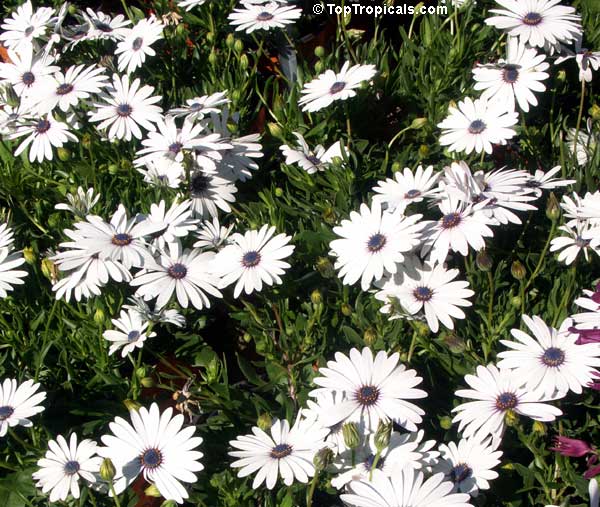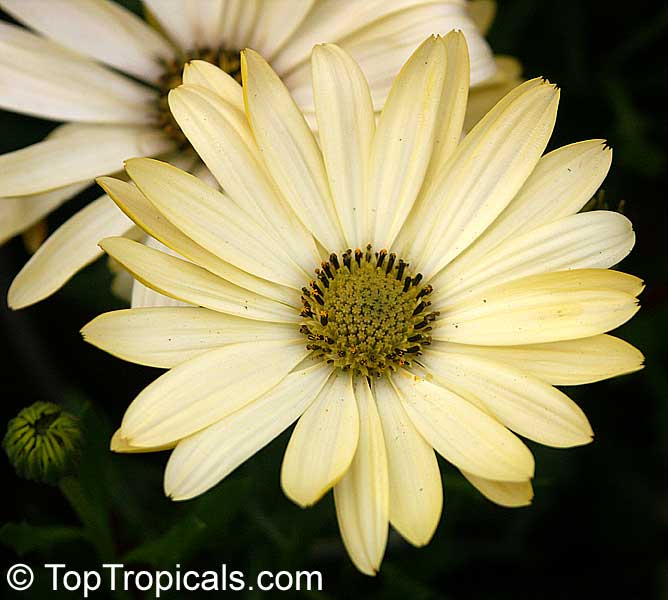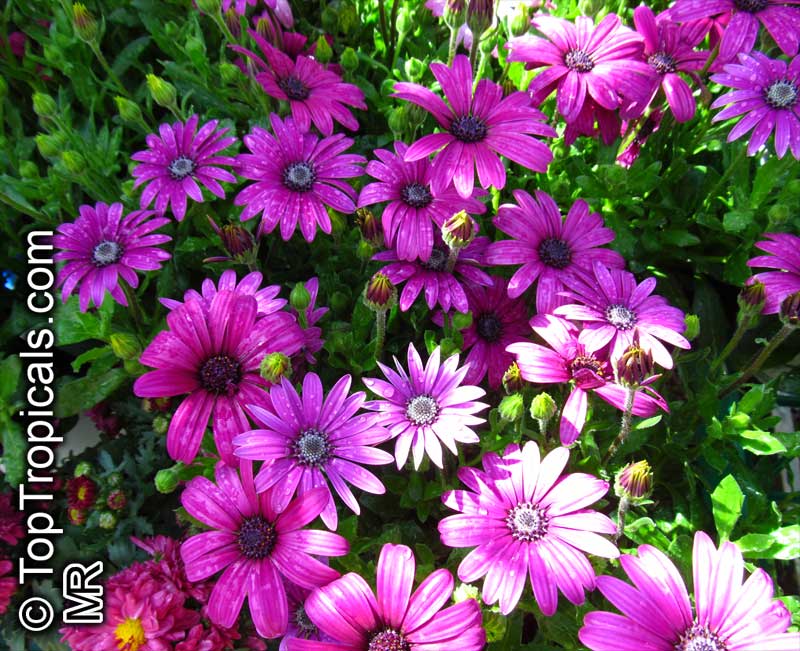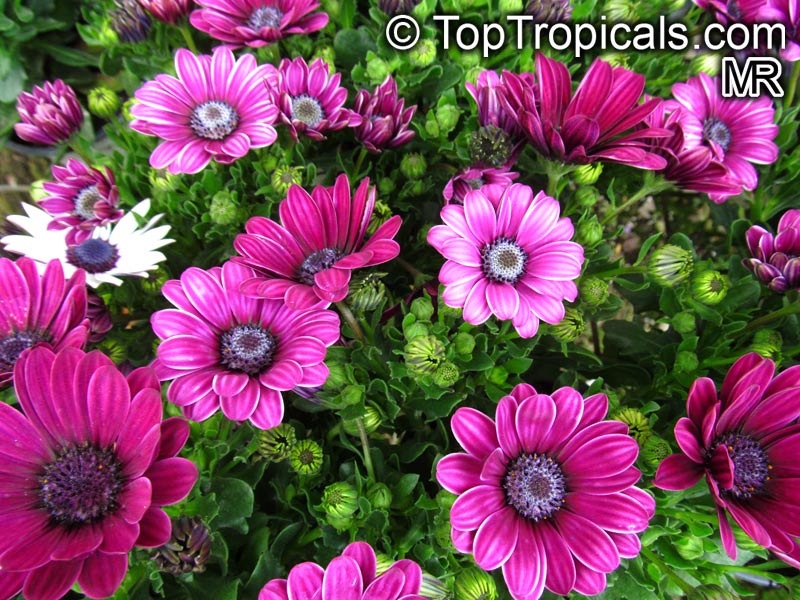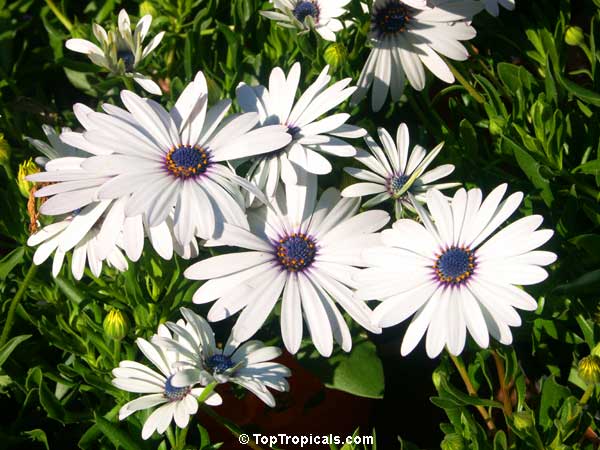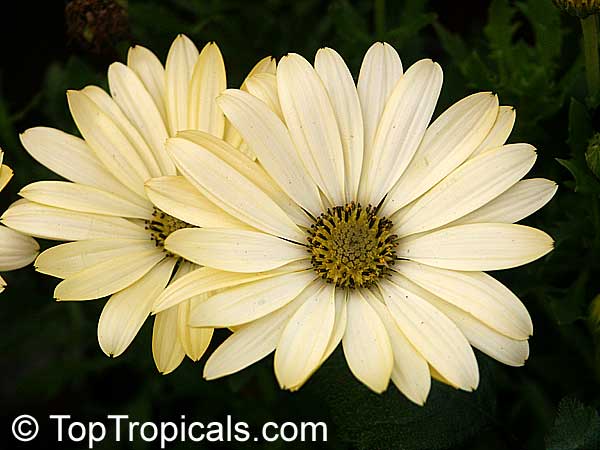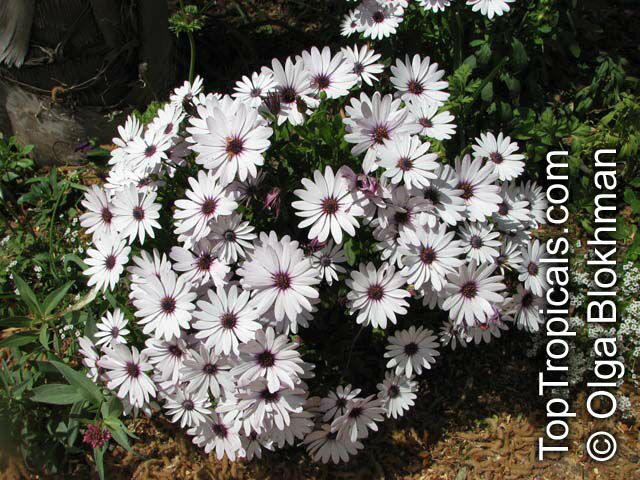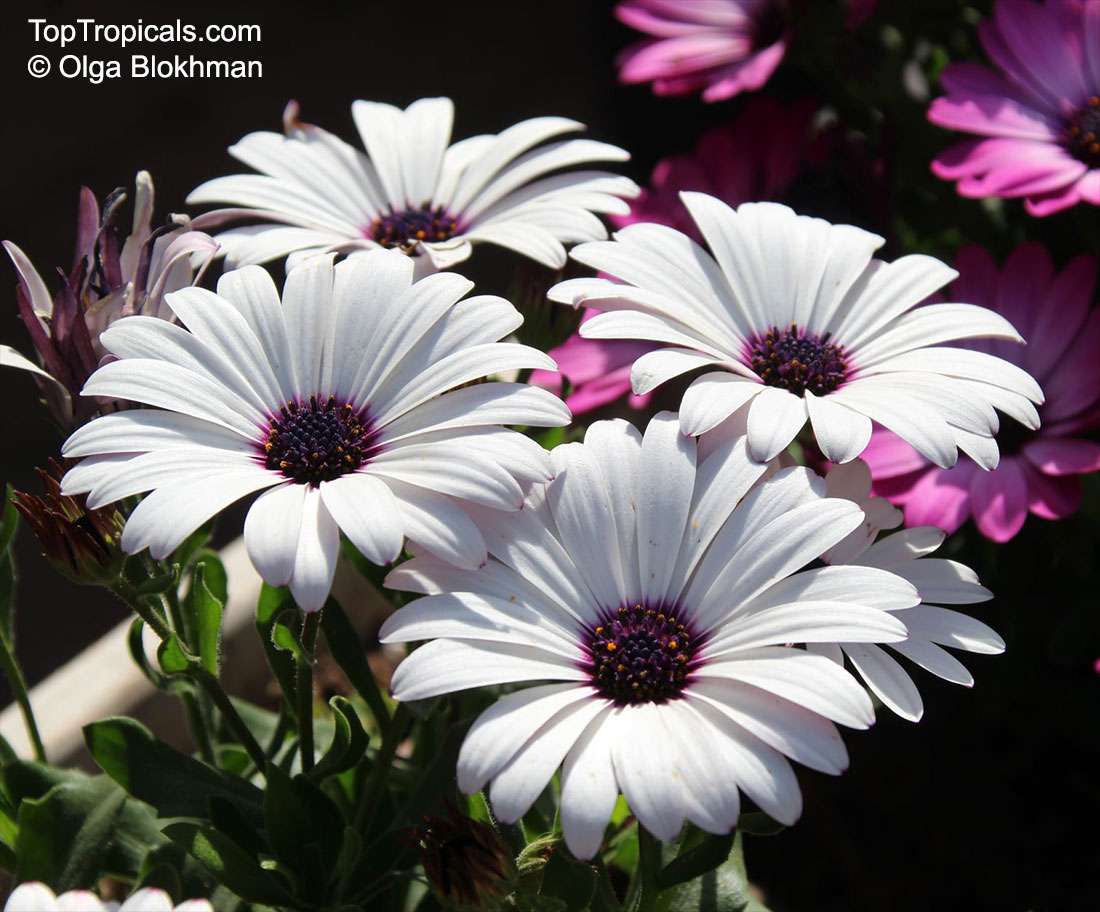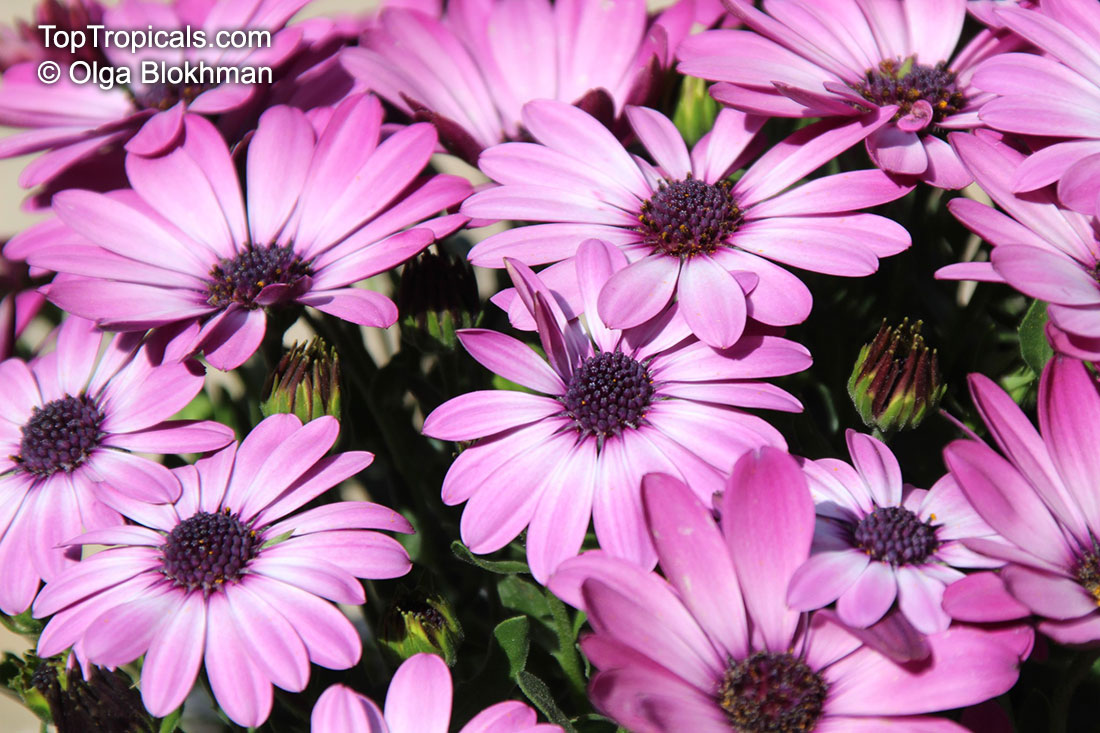Osteospermum sp. (Trailing African Daisy)
Top Tropicals Plant Encyclopedia
Botanical name: Osteospermum sp.
Common names: Trailing African Daisy, Freeway Daisy, Blue Eyed Daisy
Family: Asteraceae
Origin: Southern Africa









If you are looking to add some color to your garden, the Osteospermum sp. (Trailing African Daisy) is an excellent choice. Native to Southern Africa, this groundcover and low-growing small plant thrives in full sun and moderate water conditions. This small plant grows to a maximum of two to five feet and can be grown in USDA zones 9-11. With its daisy-like blooms coming in a variety of shades, including pink, white and off-white, blue, lavender and purple, and yellow and orange, you can create a colorful and vibrant display. Furthermore, the African Daisy is attractive to butterflies and hummingbirds, adding to the overall beauty of your garden.
The Trailing African Daisy is easy to look after and rarely suffers from pests or diseases. It is best suited for covering large open areas of level or sloping ground and grows to a maximum of two to five feet. It prefers rich soil and full sun, and established plants can cope with droughts. As well as this, the long, trailing stems of the African Daisy quickly spread across the soil, creating a beautiful carpet with leaves 1 to 2 inches long. This plant can also be grown in retaining walls or containers, and offers a graceful draping effect.
For those living in colder regions, the African Daisy does not require much maintenance and can easily be grown in a pot. Be sure to pot it in a rich, well-drained soil and place it in a sunny spot. Ensure the pot is well-watered throughout the growing season, taking extra care that it does not dry out. Apply an organic fertilizer once during the season, giving the plant the nutrients required for flower production. If grown in a pot, the African Daisy can be brought indoors for winter and placed near a sunny window.
